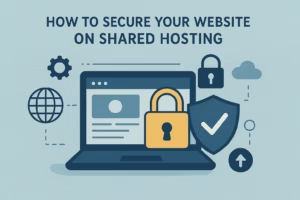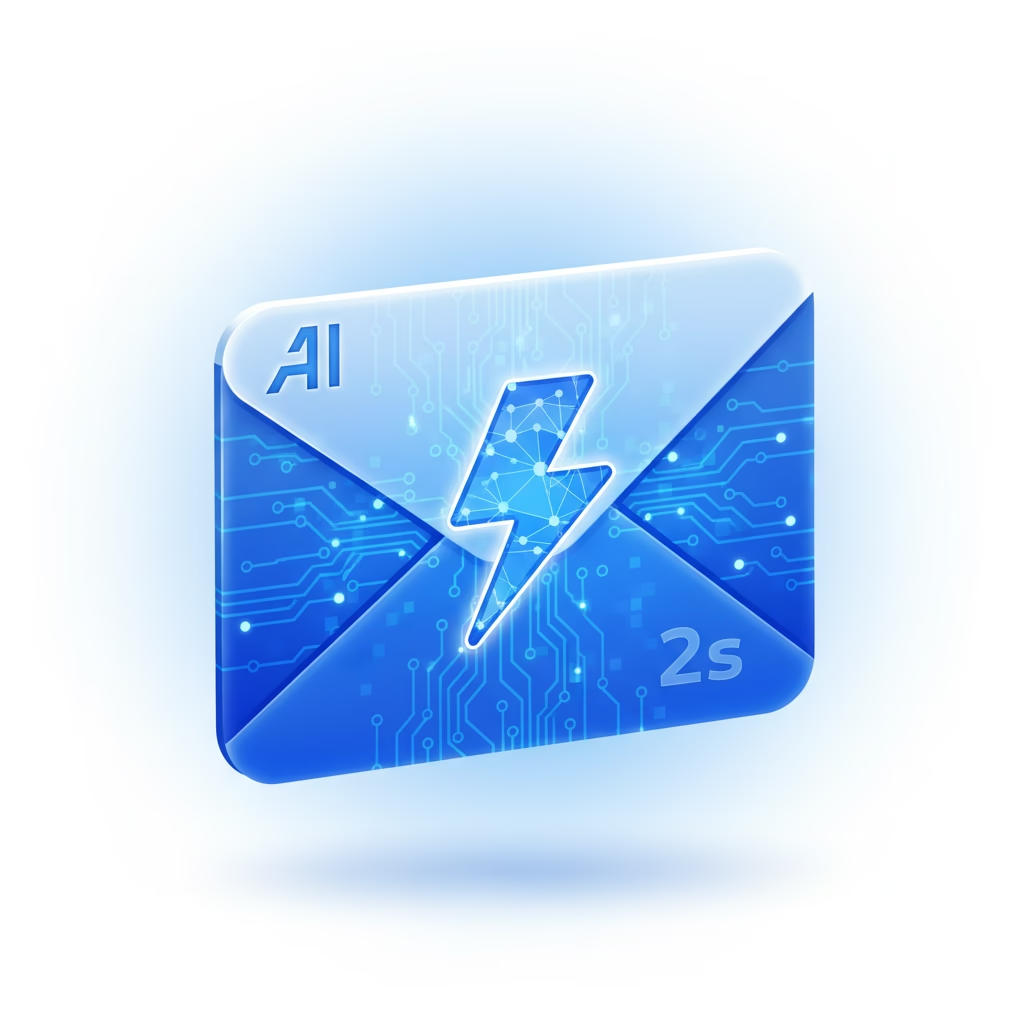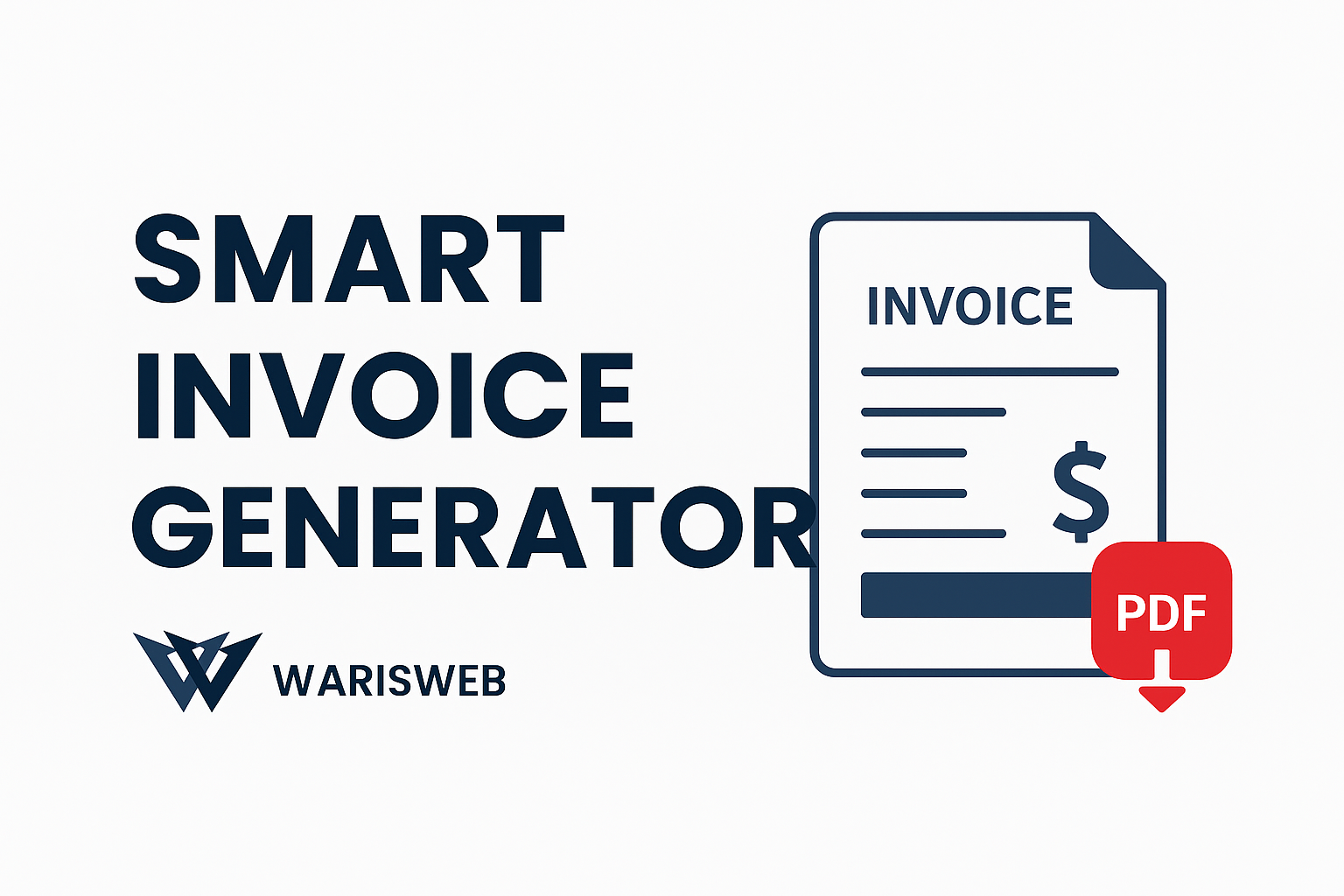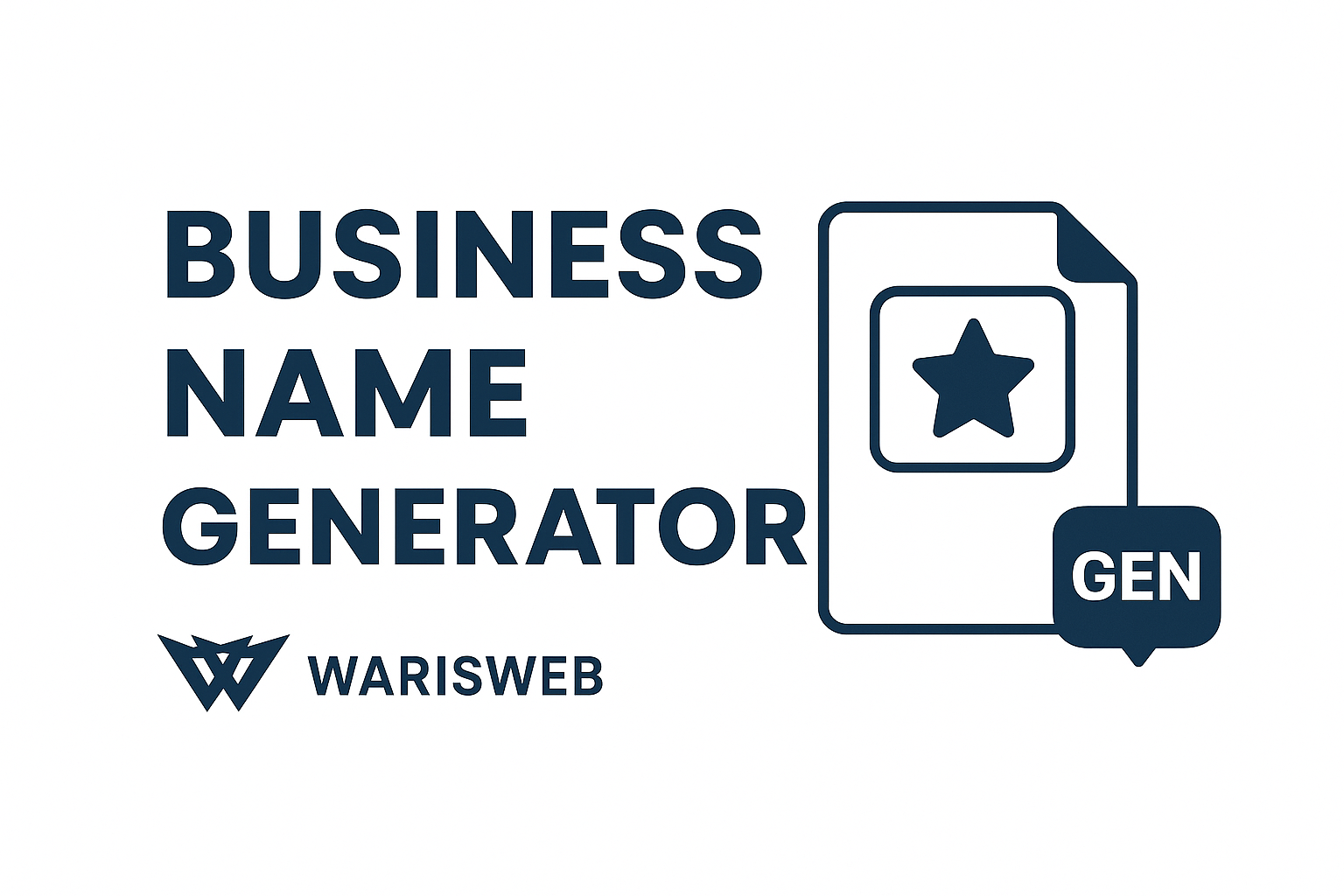Email Writing Templates for Every Situation: Your Complete Guide
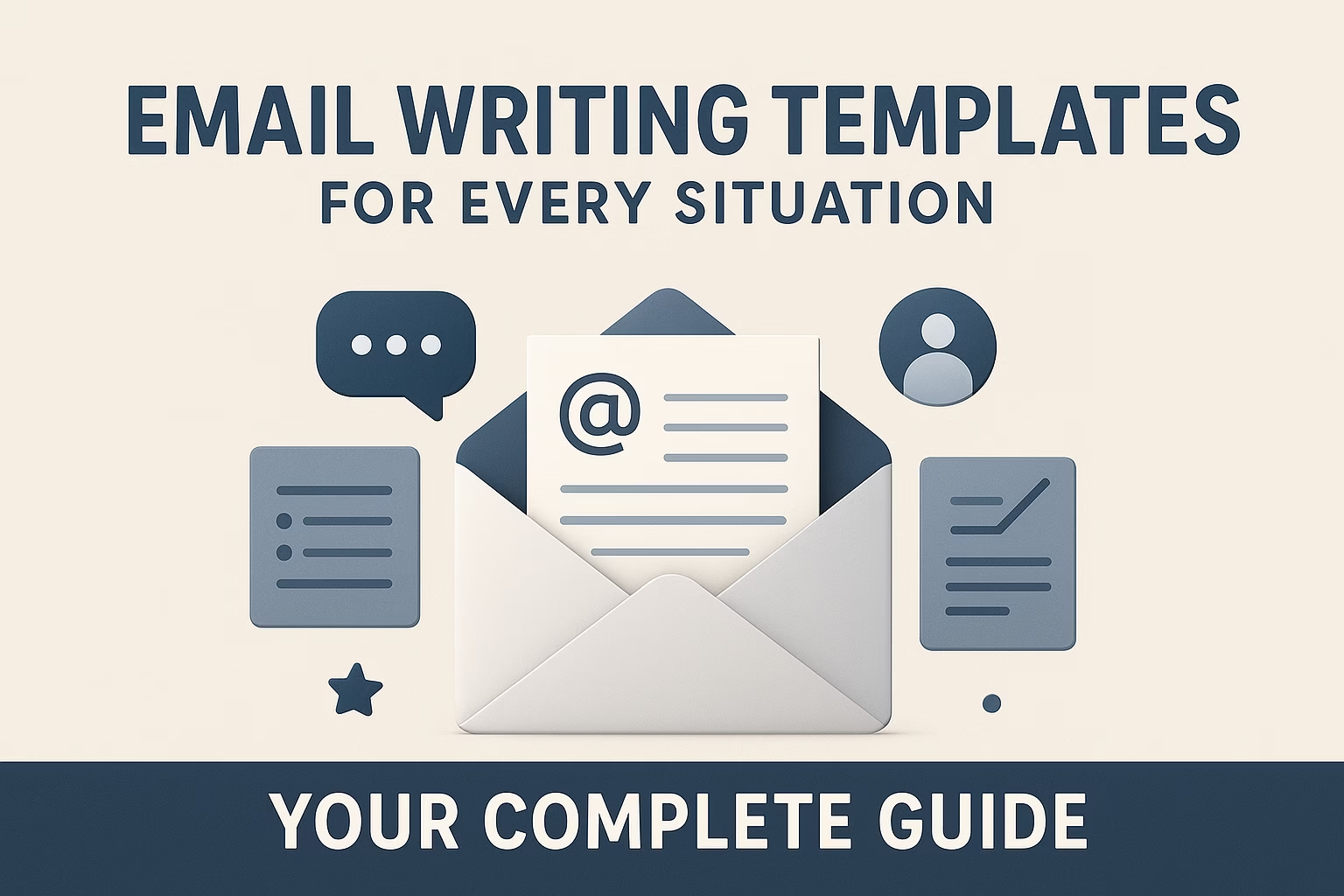
Let’s be honest—staring at a blank email can be surprisingly intimidating. Whether you’re reaching out to a potential client, following up after an interview, or just trying to politely decline an invitation, finding the right words isn’t always easy. I’ve been there, cursor blinking, wondering if I sound too formal, too casual, or just plain awkward.
The good news? You don’t need to reinvent the wheel every time you hit “compose.” With the right templates and a bit of personalization, you can write clear, professional emails in minutes instead of agonizing over every sentence.
Why Email Templates Actually Matter
Here’s something I’ve learned over the years: good email communication isn’t about being the most eloquent writer in the room. It’s about being clear, respectful, and getting your message across efficiently. Templates help you create clean, scannable layouts with short paragraphs and clear structure, which is exactly what busy people need.
Think of templates as your starting point—not a script you follow word-for-word. They give you structure so you can focus on what actually matters: your message and the person receiving it.
The Essential Email Templates You Actually Need
1. The Professional Introduction Email
When to use it: First contact with a potential client, partner, or professional connection.
Template:
Subject: Introduction from [Your Name] - [Brief Reason]
Hi [Name],
I hope this email finds you well. My name is [Your Name], and I'm a [your position/role] at [company/organization].
I came across your work on [specific project/article/achievement] and was really impressed by [specific detail]. I'm reaching out because [clear reason—potential collaboration, seeking advice, etc.].
[One paragraph about what you do and why it's relevant to them]
I'd love to connect and explore [specific opportunity or question]. Would you have 15 minutes for a quick call next week?
Thanks for considering this, and I look forward to hearing from you.
Best regards,
[Your Name]
[Contact Information]Pro tip: Always mention something specific about their work. Generic emails get deleted. Personalized ones get responses.
2. The Follow-Up Email (Without Being Annoying)
When to use it: After an interview, meeting, or when you haven’t heard back.
Template:
Subject: Following Up: [Original Subject or Meeting Topic]
Hi [Name],
I wanted to follow up on my email from [date] regarding [topic]. I understand you're likely busy, and I don't want to clutter your inbox.
I'm still very interested in [opportunity/discussion/project], and I'd appreciate any update you might have—even if it's just to let me know you need more time.
If it's easier, I'm happy to jump on a quick call at your convenience.
Thanks again for your time.
[Your Name]The timing rule: Wait at least a week before following up. For job applications, 5-7 business days is reasonable. For less formal situations, 3-5 days works.
3. The “Thanks for Meeting” Email
When to use it: After any professional meeting, interview, or networking event.
Template:
Subject: Thank You for Your Time - [Date/Meeting Topic]
Dear [Name],
Thank you for taking the time to meet with me [today/yesterday/on date] to discuss [specific topic]. I really appreciated learning about [specific thing they shared] and enjoyed our conversation about [specific detail].
[One sentence connecting your takeaway to next steps or expressing continued interest]
Please let me know if there's any additional information I can provide. I look forward to [appropriate next step].
Best regards,
[Your Name]Why it matters: This email should go out within 24 hours. It shows you’re organized, grateful, and genuinely interested.
4. The Polite “No” Email
When to use it: Declining invitations, opportunities, or requests you can’t fulfill.
Template:
Subject: Re: [Original Subject]
Hi [Name],
Thank you so much for thinking of me for [opportunity/invitation/request]. I'm truly honored you considered me.
Unfortunately, I won't be able to [participate/attend/help] due to [brief, honest reason—current commitments, timing, etc.].
[Optional: Suggest alternative if appropriate—someone else, different timing, etc.]
I hope we can connect on future opportunities, and I wish you all the best with [project/event].
Warm regards,
[Your Name]The golden rule: You don’t owe anyone a lengthy explanation. “Current commitments” is perfectly acceptable.
5. The Request for Help/Favor Email
When to use it: Asking for advice, an introduction, or someone’s time.
Template:
Subject: Quick Question About [Specific Topic]
Hi [Name],
I hope you're doing well. I'm reaching out because [context for why you're contacting them specifically].
I'm currently [your situation], and I was wondering if you might have [specific, reasonable request]. I know your time is valuable, so I've kept this brief.
[One paragraph with necessary details]
I completely understand if you're too busy right now. Either way, I appreciate you reading this.
Thank you,
[Your Name]Key insight: Make your request specific and easy to fulfill. “Can you introduce me to your entire network?” is overwhelming. “Would you be comfortable introducing me to [specific person] via email?” is doable.
6. The Apology Email
When to use it: When you’ve made a mistake, missed a deadline, or need to make things right.
Template:
Subject: Apology and Next Steps - [Topic]
Hi [Name],
I want to apologize for [specific mistake/issue]. This was my oversight, and I take full responsibility.
[Briefly explain what happened—no long excuses]
Here's how I'm addressing it: [specific actions you're taking to fix it]
[If applicable: New timeline/commitment]
I value [our relationship/this project], and I'm committed to making sure this doesn't happen again.
Thank you for your understanding.
[Your Name]What works: Own it quickly, explain briefly, fix it completely. No excuses, no deflecting.
7. The Out-of-Office Message That Actually Helps
When to use it: Vacations, sick days, or any time you’ll be away from email.
Template:
Subject: Out of Office: [Your Name]
Thank you for your email. I'm currently out of the office from [start date] to [end date] with limited access to email.
If your matter is urgent, please contact [backup person] at [their email].
Otherwise, I'll respond to your message when I return on [date].
Thank you for your patience.
[Your Name]Clear dates and alternative contacts are essential for effective out-of-office messages—people need to know when you’ll actually see their email.
8. The Cold Outreach Email (That Doesn’t Feel Cold)
When to use it: Sales, partnerships, or reaching out to someone you don’t know.
Template:
Subject: [Specific Value Proposition/Question]
Hi [Name],
I noticed that [specific observation about their company/work/recent achievement].
I'm [your name] from [company], and we help [specific type of people/companies] with [specific problem you solve]. Based on [their situation], I thought this might be relevant.
[One paragraph about specific value you can offer them—be concrete]
Would you be open to a brief 10-minute conversation to explore whether this could be valuable for [their company/situation]?
No pressure either way—I know unsolicited emails can be a lot.
Best,
[Your Name]The reality check: Keep subject lines short—around 3-5 words work best. And most cold emails get ignored. That’s normal. Follow up once, then move on.
The Email Writing Principles That Never Change
Templates are great, but here are the universal rules I try to follow:
1. Subject lines matter more than you think. Write short, straightforward subject lines that capture attention. “Quick question” is vague. “Question about Q3 marketing budget” is clear.
2. Get to the point. Nobody has time for three paragraphs of preamble. State your purpose within the first two sentences.
3. One email, one topic. Don’t bundle your job application with a request for advice about grad school. Keep it focused.
4. Proofread. Always. Typos happen, but sending “I’m very excited about this oppurtunity” doesn’t inspire confidence.
5. Consider your tone. Read your email out loud. Does it sound like you’re talking to a human, or like a robot trying to pass a Turing test?
When Templates Aren’t Enough: Use AI Assistance
Look, I’m going to level with you. Sometimes you need more than a template. Sometimes you need help with tone, clarity, or just making sure you’re not saying something that could be misinterpreted.
That’s where tools like the AI Email Writing Assistant or AI Email Writer come in handy. I’m not saying you should let AI write all your emails—that would defeat the entire purpose of genuine communication. But for those moments when you’re stuck, or when English isn’t your first language, or when you need to strike exactly the right tone with a difficult email, having an assistant can save you from anxiety and second-guessing.
The key is using these tools as editors, not writers. You provide the ideas and authenticity. The tool helps with structure and clarity.
The Biggest Email Mistakes (And How to Avoid Them)
Replying all when you shouldn’t. We’ve all seen this disaster. Before hitting “reply all,” ask yourself: does every single person on this thread need to see my response?
Writing when angry. Draft it, save it, walk away. Come back in an hour. Then decide if you actually want to send it. (Spoiler: you usually don’t.)
Being too casual with people you don’t know well. “Hey!” might work with your coworkers. It’s risky with new clients.
Over-explaining. You don’t need to provide your entire thought process. Keep it concise.
Forgetting attachments. Pro tip: attach the file BEFORE writing the email. Can’t forget what’s already there.
Making Templates Your Own
Here’s the thing about templates: they only work if you personalize them. The structure stays the same, but the details need to be authentically you.
Change the tone to match your style. Add industry-specific language. Reference real situations. The goal isn’t to sound like everyone else—it’s to communicate clearly without starting from scratch every time.
Think of templates like recipes. You can follow the basic structure, but you adjust the ingredients based on what you have, who you’re cooking for, and what you’re trying to achieve.
The Bottom Line
Email doesn’t have to be complicated. You don’t need to be Shakespeare—you just need to be clear, considerate, and reasonably professional.
These templates will handle 80% of your email situations. For the other 20%? Use your judgment, trust your instincts, and remember that the person on the other end is human too. They appreciate clarity, respect their time, and respond to genuine communication.
Start with these templates, make them your own, and watch your email confidence grow. And when you’re really stuck? Don’t be afraid to ask for help or use tools designed to make communication easier.
Now stop procrastinating and send that email. You’ve got this.
About the Author: This guide draws from years of professional communication experience and current best practices in email writing. For additional help with crafting the perfect email, check out our Email Writing Assistant tool.
Have your own email template that works great? Share it in the comments—we all benefit from learning from each other.
Share This Post:
Our Free Online Tools
Transform Your Thoughts into Polished Emails With ai
Previous Articles:
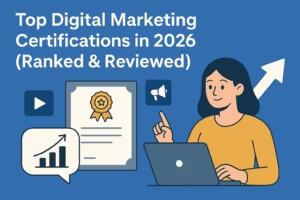
Top Digital Marketing Certifications in 2026 (Ranked & Reviewed)

